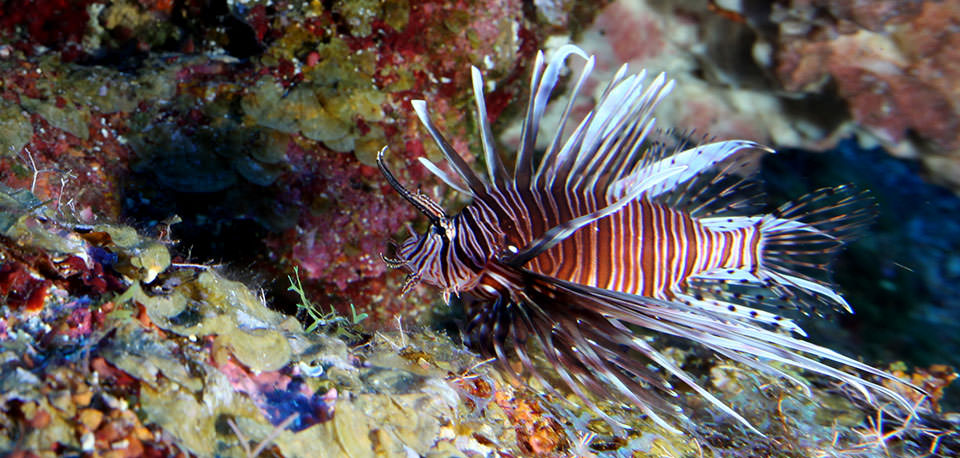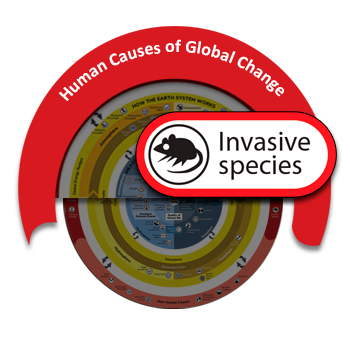Invasive species are plants, animals, or disease-causing organisms that are not native to an ecosystem and have been introduced accidentally or on purpose by humans. Invasive species prey on native species or compete with native organisms for sunlight, food, water, shelter, or other resources, and as a result, can harm the health and survival of other species populations. Invasive species are often introduced as people travel and import and export supplies.
Urbanization also creates disturbed environments where invasive species often thrive and outcompete native species. For example, many invasive plant species thrive along strips of land next to roads and highways. Invasive species that can survive in a variety of conditions, for example, in warmer temperatures, are also more likely to survive and reproduce in new regions of the globe due to human-caused climate change.

Lionfish are native to the South Pacific and Indian Oceans, but are invasive in the southeastern United States Atlantic coast from Florida to North Carolina, as well as in the Gulf of Mexico and the Caribbean. Lionfish disrupt marine ecosystems by competing for food and shelter with native species. Credit: NOAA
- Reducing native species populations either directly by predation, or by using food, water, nutrients, or other resources that native species also use. Native and invasive species may evolve to compete for resources.
- Extinction, if invasive species successfully outcompete native species for resources, or critically reduce native species populations through predation.
- Decreasing species ranges by decreasing the amount of resources available for other organisms in ecosystems.
- Changing species interactions by decreasing native species population sizes and/or ranges.
- Acting as hosts for diseases and parasites, or producing toxins which can harm the health of native species and humans.
- Altering habitats. For example, many invasive plant species have shallow roots that do not stabilize soil as well as native species. As a result, when invasive species become abundant, erosion can increase and more sediment can enter into stream environments, which in turn decreases water quality.
Can you think of additional cause and effect relationships between invasive species and other parts of the Earth system?
Visit the agricultural activities, species populations, and species ranges pages to learn more about how processes and phenomena in the biosphere affect global climate and ecosystems.
Investigate
Learn more in these real-world examples, and challenge yourself to construct a model that explains the Earth system relationships.
